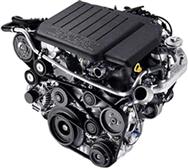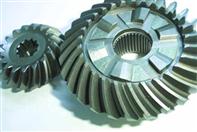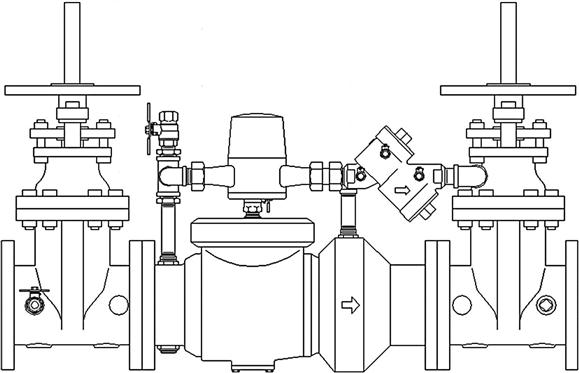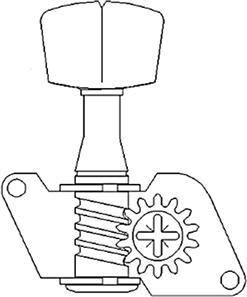Spotlight On: Mechanical Engineering
Mechanical engineering is the science of designing and manufacturing mechanical systems or devices. It is one of the oldest and most widespread engineering specialties and is often the profession one has in mind when thinking of a typical engineer. Mechanical engineering is also by far the most diverse of the engineering specialties, and “mechies” can be found working in fields as wide-ranging as aerospace, automotive, naval, rail, power, infrastructure, robotics, manufacturing, consumer products, and much more. It is truly a profession that keeps our society moving.
Mechanical engineers need to master a wide variety of engineering sciences, structures, materials, vibrations, machine design, control systems, electrical engineering, and more. They also need to be well versed in business practices, cost analysis, and risk assessment, as design and production of just about anything is closely tied to these. Mechanical engineers have been the driving force behind development of high-end software tools, such as finite element analysis (FEA) for structural work.
Education for mechanical engineers starts out similar to education for the other engineering disciplines. In the United States, all engineers typically have to attend a four-year ABET-accredited school for their entry level degree, a Bachelor of Science. While there, all students go through a somewhat similar program in their first two years, regardless of future specialization. Classes taken include extensive math, physics, and some chemistry courses, followed by statics, dynamics, mechanics, thermodynamics, fluid dynamics, and material science. In their final two years, engineers specialize by taking courses relevant to their chosen field. For mechanical engineering, this includes classes on structures, controls, vibration analysis, thermodynamics, and machine design, among others.

Figure 1

Figure 2
Upon graduation, mechanical engineers can immediately enter the workforce or go on to graduate school. Although not required, some engineers choose to pursue a Professional Engineer (P.E.) license. The process first involves passing a Fundamentals of Engineering (F.E.) exam, followed by several years of work experience under a registered P.E. and finally sitting for the P.E. exam itself. Mechanical engineering is also an excellent undergraduate degree for entry into law, medicine, or business school. Just some of the careers you can pursue with an engineering bachelor’s followed by a JD, MD, or an MBA include patent attorney, biomedical engineer, and manager or CEO of an engineering firm. If you can handle the education requirements, the mechanical engineering undergraduate degree may truly be one of the most useful ones in existence.
Mechanical engineers can generally expect starting salaries (with a bachelor’s degree) in the $58,000/year range, which is in the middle of the pack among engineering specialties, behind computer, petroleum, and chemical engineering. This, of course, depends highly on market demand and location. A master’s degree is highly desirable and required for many management spots. The median salary in 2010 was $78,160, with the top 25% making $94,400. The job outlook for mechanical engineers is excellent, as the profession is so diversified that there is always a strong demand in some of the sectors, even if others are in a downturn.
So, how do mechanical engineers use AutoCAD and what can you expect? Industrywide, AutoCAD enjoys significant amount of use, even as its share shrinks as companies switch to low-cost 3D solutions such as SolidWorks and Inventor.
In truly high-end design (aerospace, automotive, and naval, for example), the dominant software applications continue to be CATIA, NX, and Pro/Engineer; and AutoCAD does not compete with these. However, this still leaves many applications where AutoCAD is appropriate, such as small part design, schematics, and overall layout of systems. Many companies also do not manufacture but rather assemble modular pieces into new products; here, too, AutoCAD is the appropriate low-cost solution. Let us take a look at a few examples.
The acronym P&ID stands for piping and instrumentation diagrams, a major mechanical engineering field, commonly referred to as process control. Engineers use the principles of fluid flow, material science, and hydrodynamics to design piping and valves that regulate fluid flow. This can be anything from a chemical plant to an electrochlorination system to waste treatment. Usually, systems are assembled out of standard industry parts, so AutoCAD is the appropriate tool to put them together into a design. Figure 3 shows a typical piping valve profile diagram.
Small device assemblies are another example of mechanical design. If the parts are standard and no manufacturing is necessary, only assembly drawings, then AutoCAD can be used to depict the ideas. Figure 4 shows an AutoCAD drawing of an instrument tuning peg assembly.


